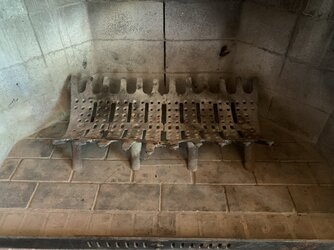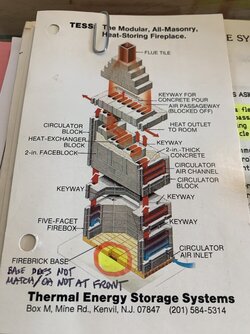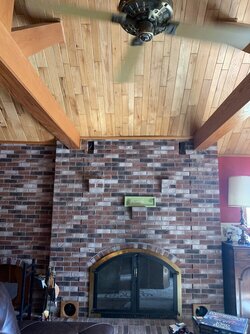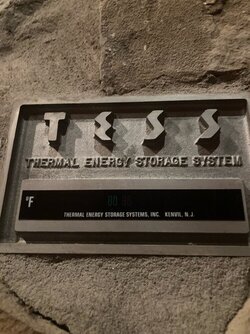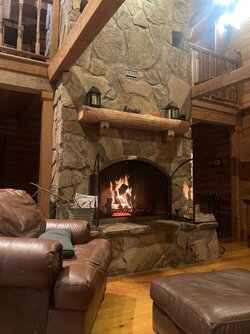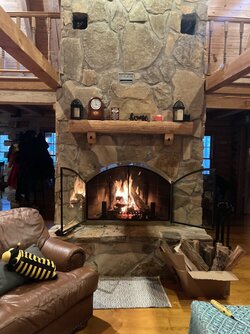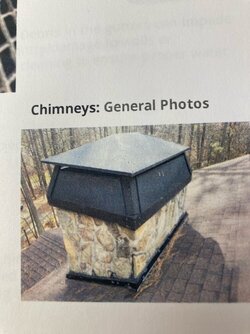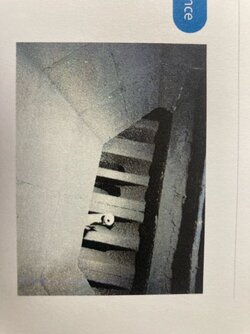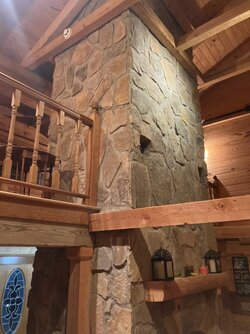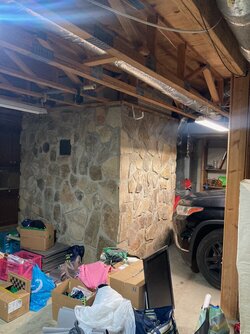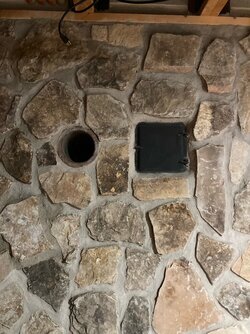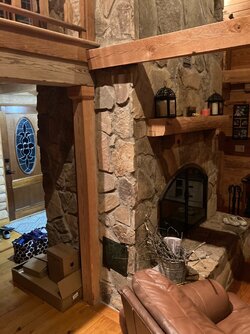This was hard for me to find any resources or help, so I'm sharing to help others in the same boat, few as they may be.
I moved into a new home back in April. One of the main selling points to me was a centrally located freestanding masonry fireplace that was nearly 30' of exposed brick inside the home for radiant heat. I couldn't wait to get my hearthstone Clydesdale moved in and unleash the heating power that was overpowering the previous 2000sqft home. I had no idea what was hiding inside...
This home has been a fixer' upper so I've been too busy to do too much with the fireplace. Several months in I heard rumor from the original builder that the fireplace was something special. I started looking inside to see how clean the flue was and to observe how difficult it was going to be to line it. I overserved multiple "bars" running front to back with layers above that offset by half and also running front to back. I had no idea what I was looking at. I called the original builder again which wasn't too helpful. Then i called a few chimney sweeps in the area to see if they knew what i had going on. One gentlemen remembered the property and remembered cleaning the system some 20 years ago. He was excited to come take another look. He said it's the only one he's ever seen.
Turns out, after looking through more paperwork, I learned it is a TESS model 36R and/or 148. The basic idea is to capture as much heat as possible in the chimney through the use of shear mass including refractory, mortar, and brick - some 13,000 pounds of it. Slow the burn with sealed fireplace doors and offer fresh air intake to conserve the warm air inside. The mass can store 266k of BTUs for hours. The freestanding chimney radiates heat all the way up until to goes through the roof in the final 5 feet.
I've only burned twice so far this year. It will take another several months of learning to get the most out of this. Air flow will be important to get the most out of the wood. Also, this thing is going to chew through some wood. Good news is the logs can be +36" easily (if i feel like handling them..) I will be reaching out to Wilkening fireplace for some custom new sealed fireplace doors.
If anyone has this type of unit, please reach out. Interested to hear the user experience and gain any tips/tricks. I'm happy to have something that appears to be particularly unique - so long as it heats my home okay.
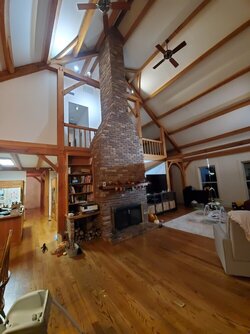
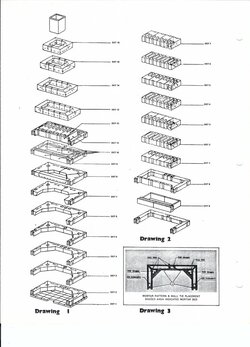
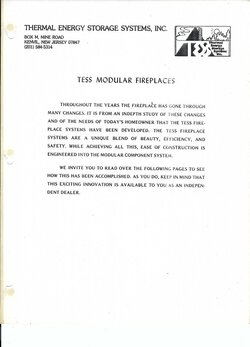
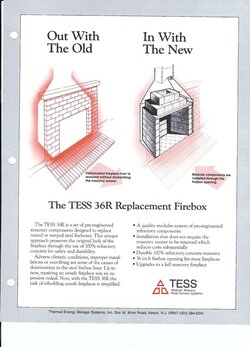
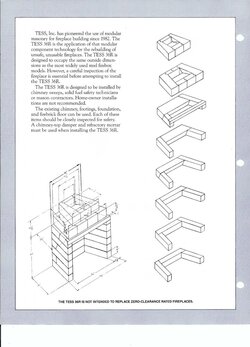
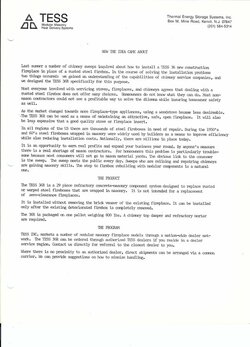
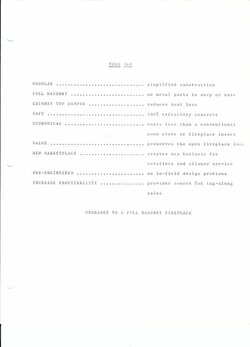
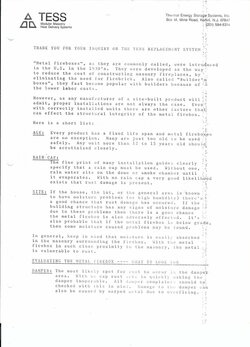
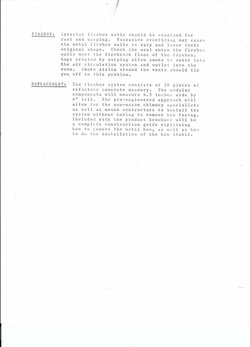
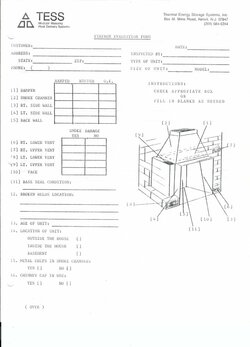
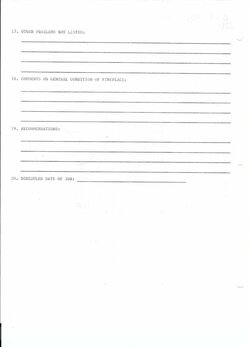
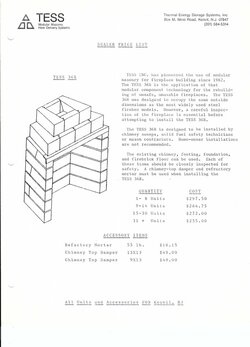
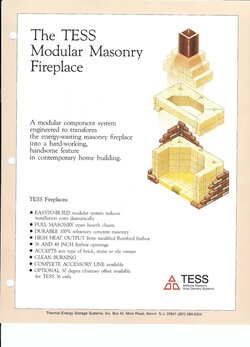
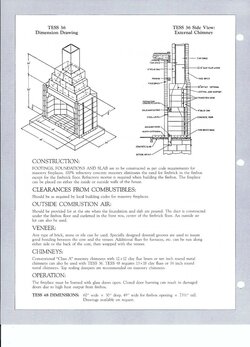
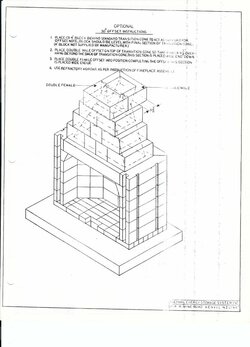
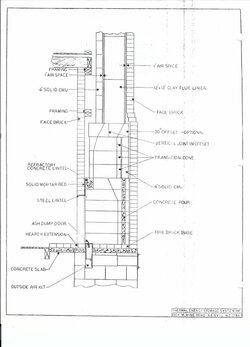
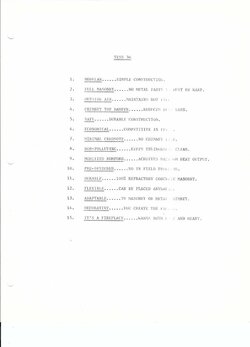
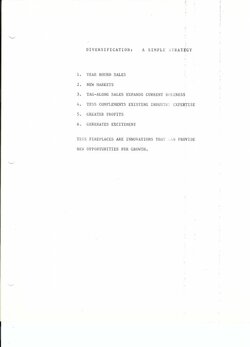

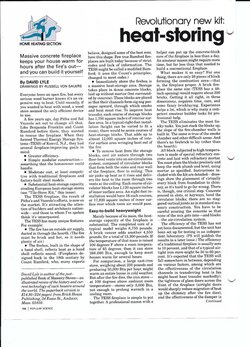
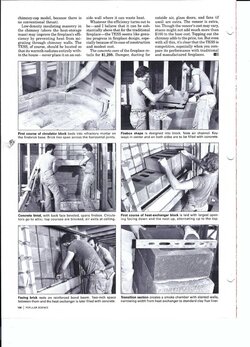
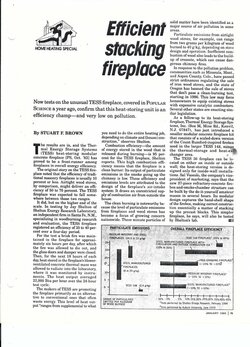
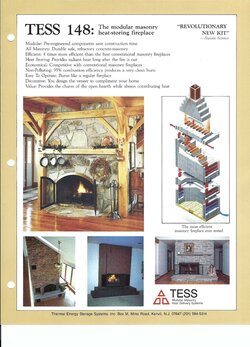
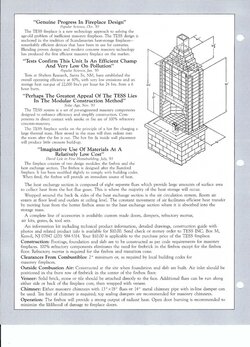
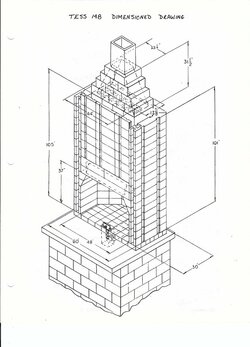
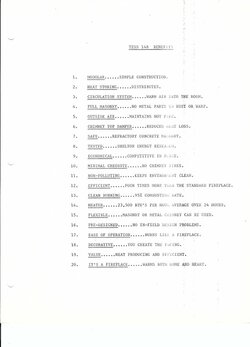
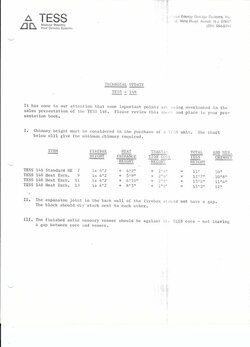
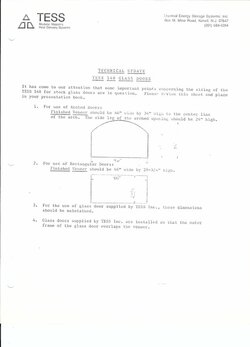
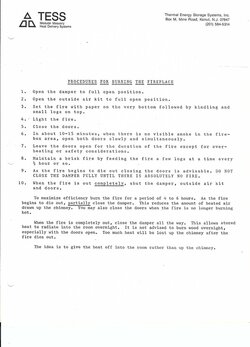
I moved into a new home back in April. One of the main selling points to me was a centrally located freestanding masonry fireplace that was nearly 30' of exposed brick inside the home for radiant heat. I couldn't wait to get my hearthstone Clydesdale moved in and unleash the heating power that was overpowering the previous 2000sqft home. I had no idea what was hiding inside...
This home has been a fixer' upper so I've been too busy to do too much with the fireplace. Several months in I heard rumor from the original builder that the fireplace was something special. I started looking inside to see how clean the flue was and to observe how difficult it was going to be to line it. I overserved multiple "bars" running front to back with layers above that offset by half and also running front to back. I had no idea what I was looking at. I called the original builder again which wasn't too helpful. Then i called a few chimney sweeps in the area to see if they knew what i had going on. One gentlemen remembered the property and remembered cleaning the system some 20 years ago. He was excited to come take another look. He said it's the only one he's ever seen.
Turns out, after looking through more paperwork, I learned it is a TESS model 36R and/or 148. The basic idea is to capture as much heat as possible in the chimney through the use of shear mass including refractory, mortar, and brick - some 13,000 pounds of it. Slow the burn with sealed fireplace doors and offer fresh air intake to conserve the warm air inside. The mass can store 266k of BTUs for hours. The freestanding chimney radiates heat all the way up until to goes through the roof in the final 5 feet.
I've only burned twice so far this year. It will take another several months of learning to get the most out of this. Air flow will be important to get the most out of the wood. Also, this thing is going to chew through some wood. Good news is the logs can be +36" easily (if i feel like handling them..) I will be reaching out to Wilkening fireplace for some custom new sealed fireplace doors.
If anyone has this type of unit, please reach out. Interested to hear the user experience and gain any tips/tricks. I'm happy to have something that appears to be particularly unique - so long as it heats my home okay.































